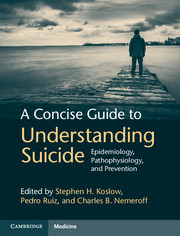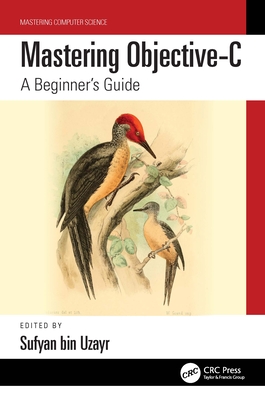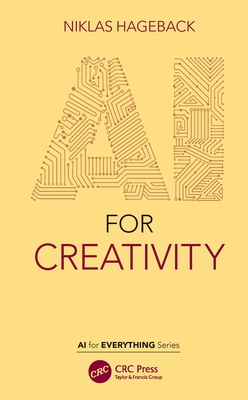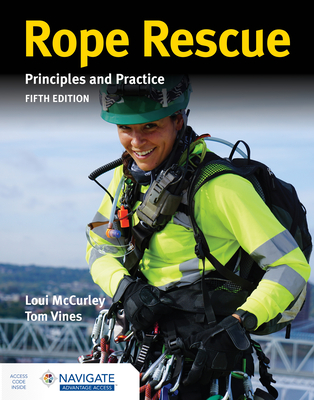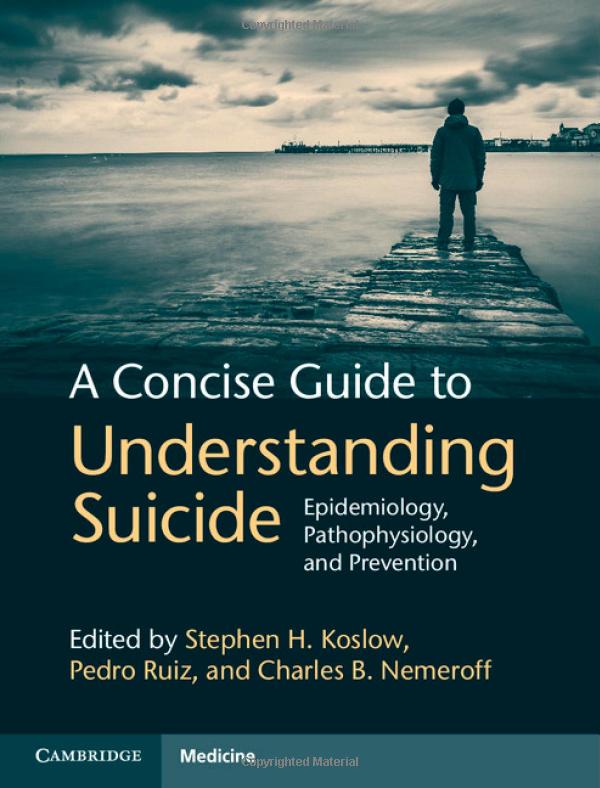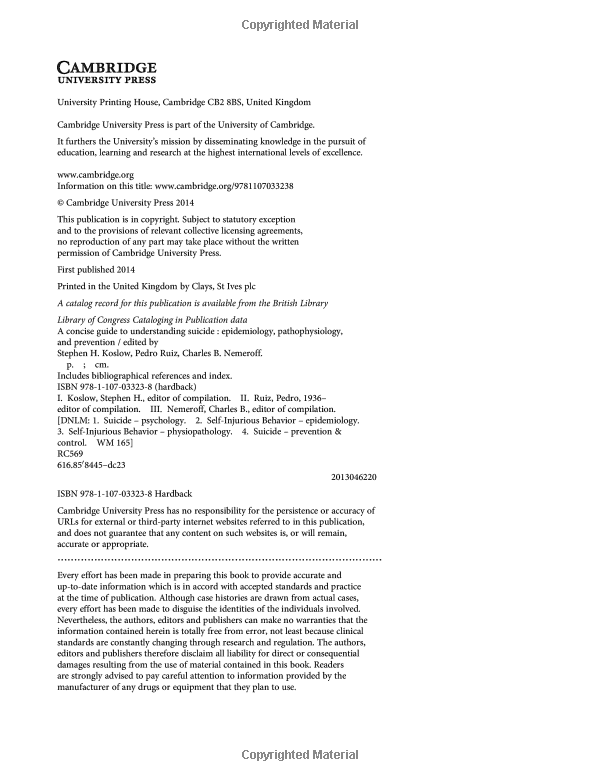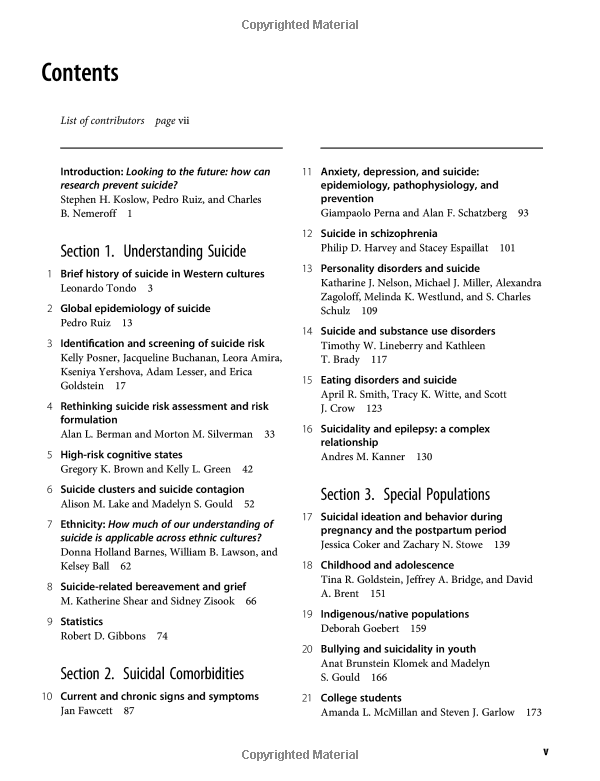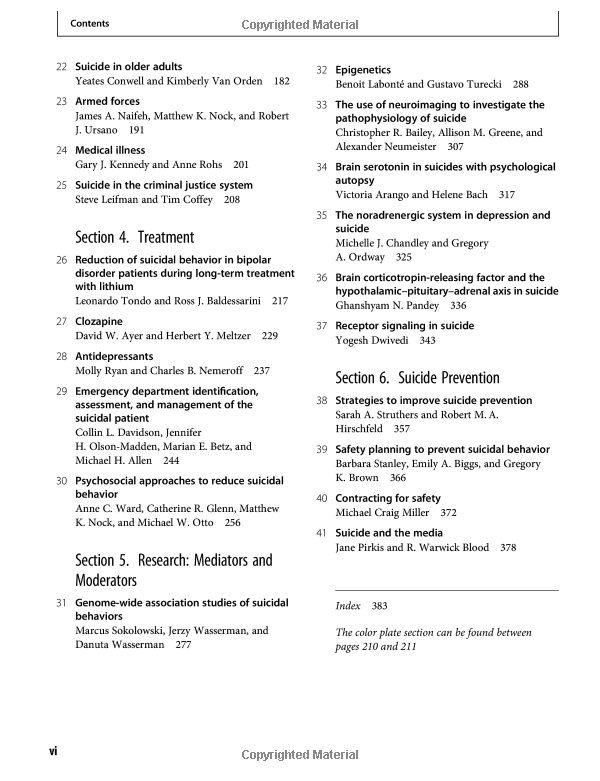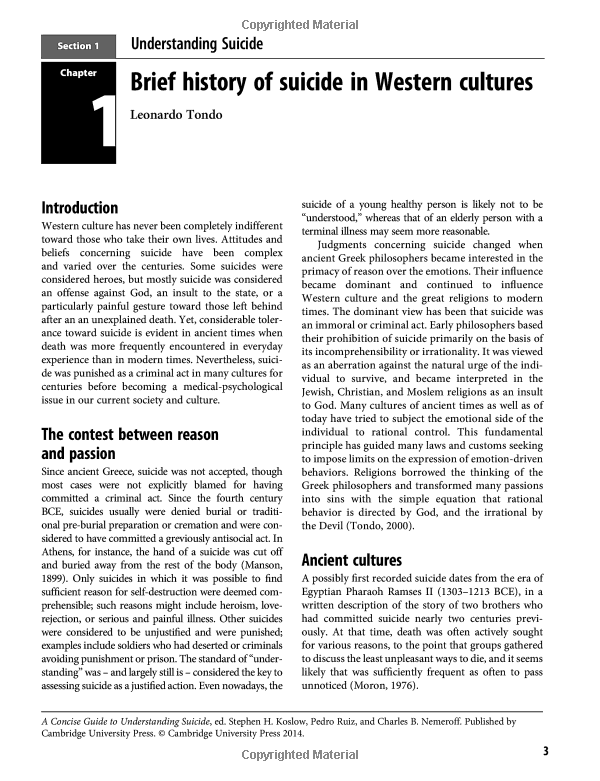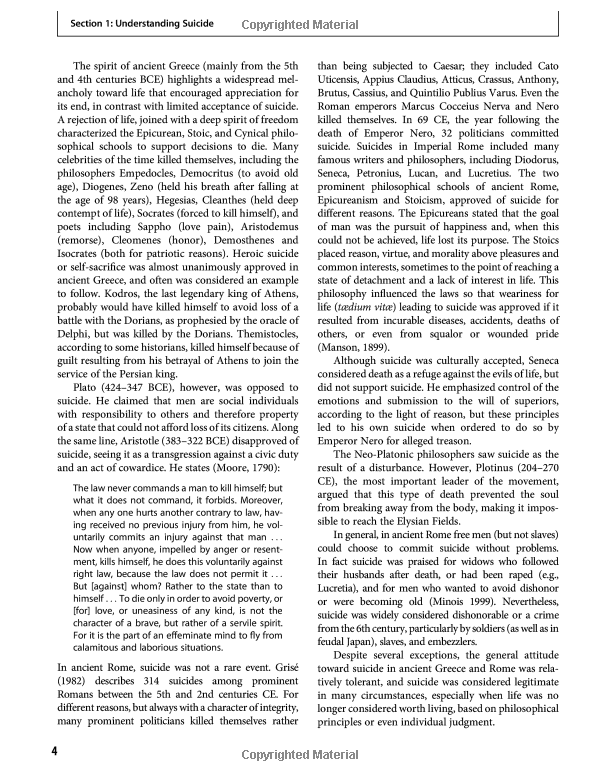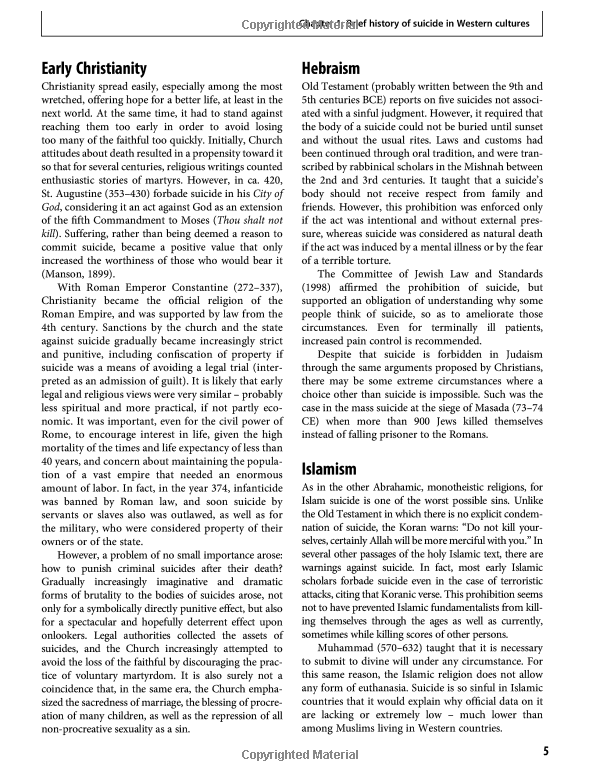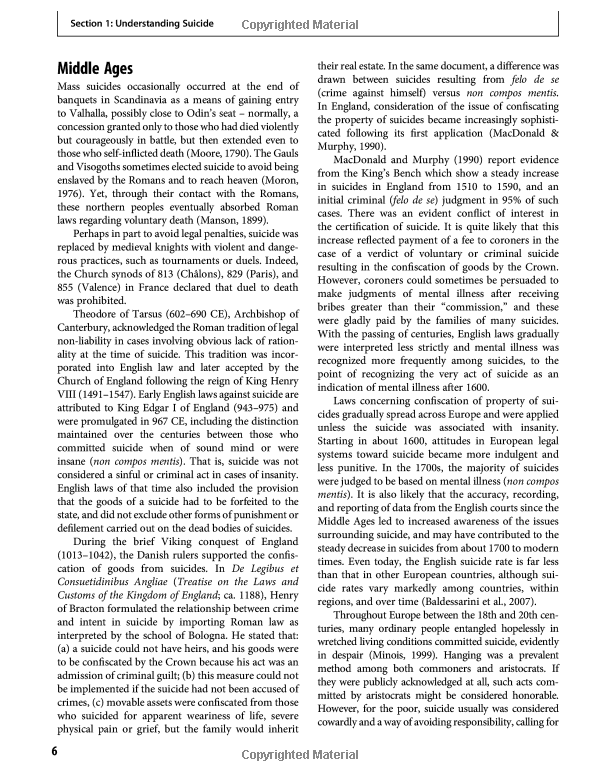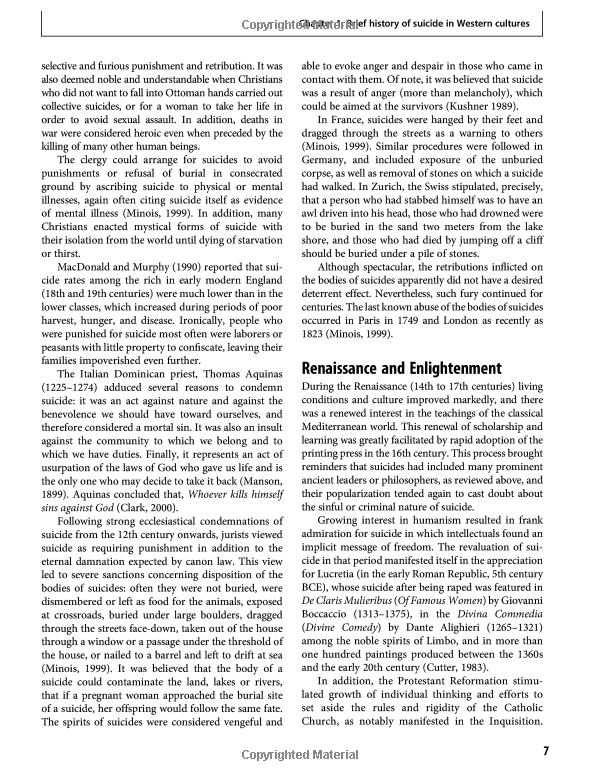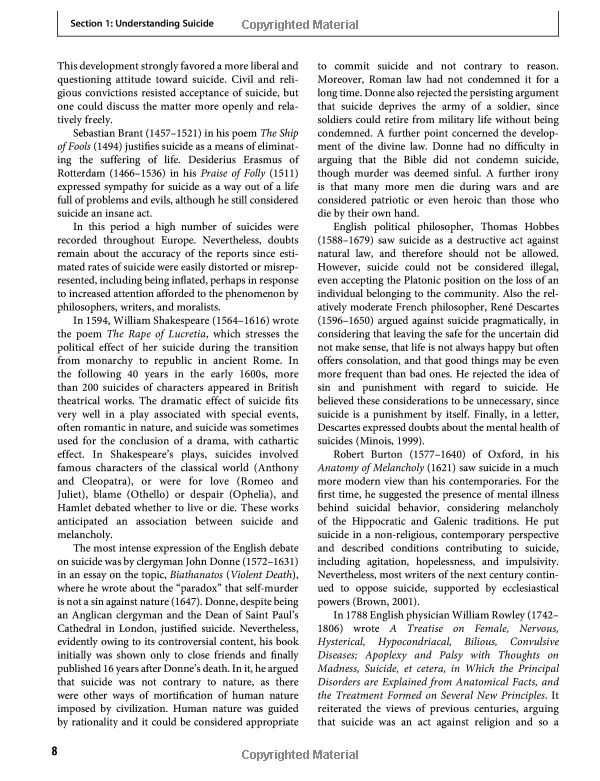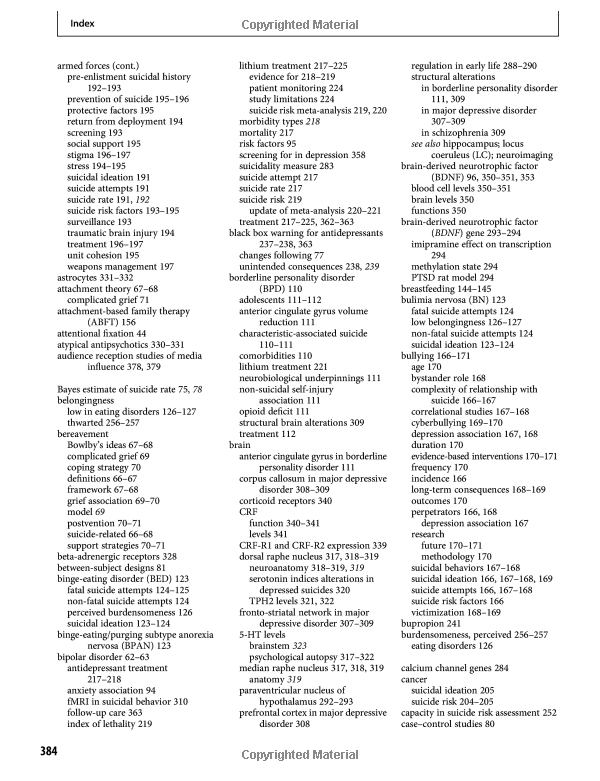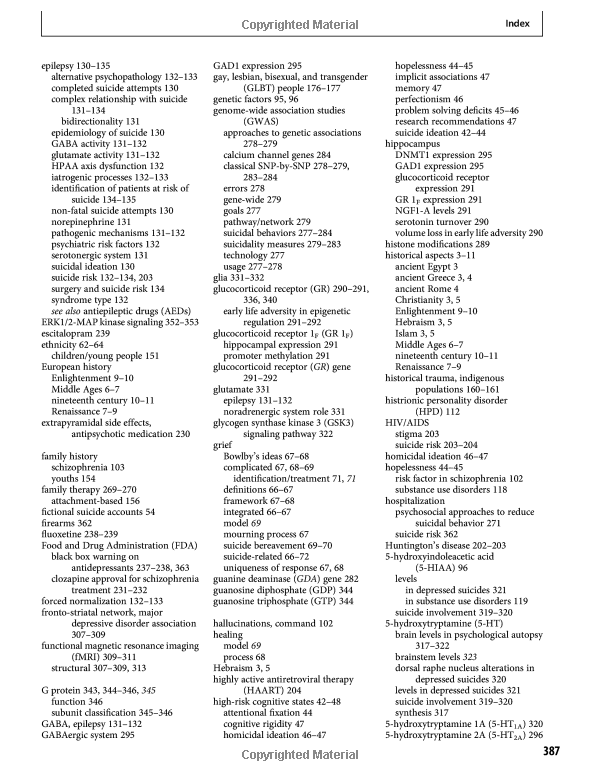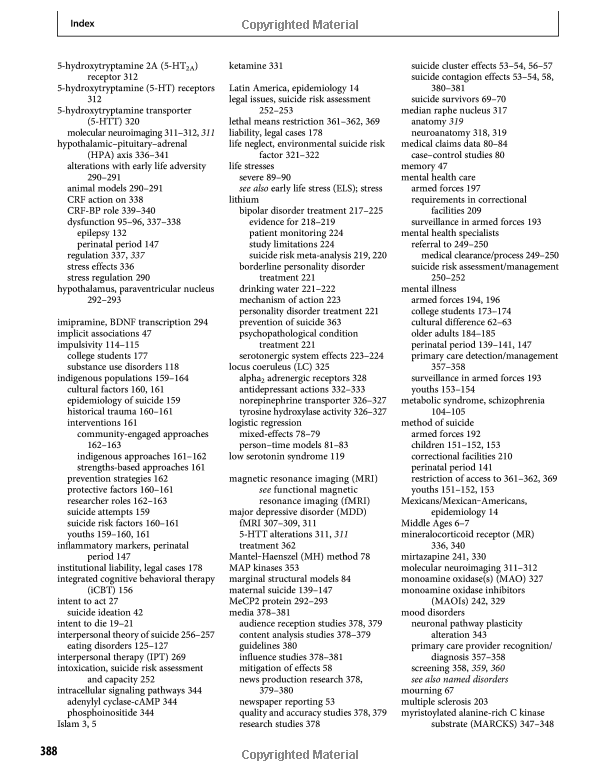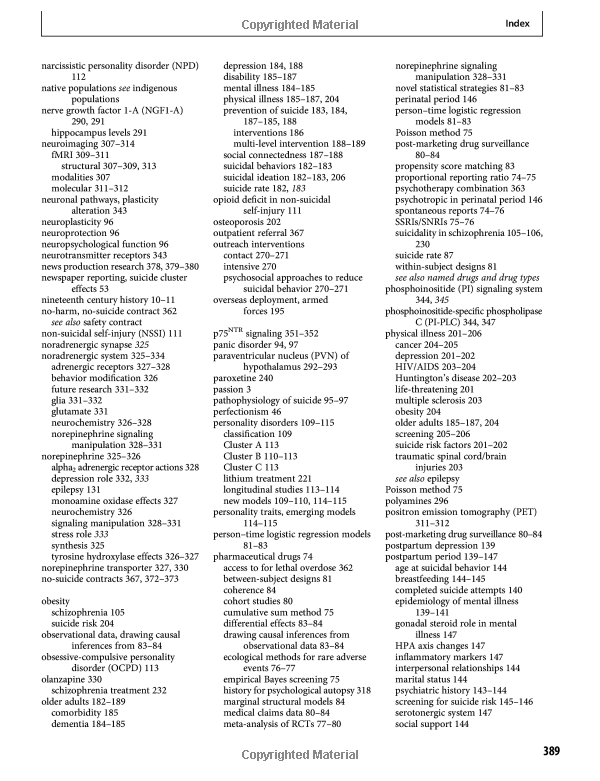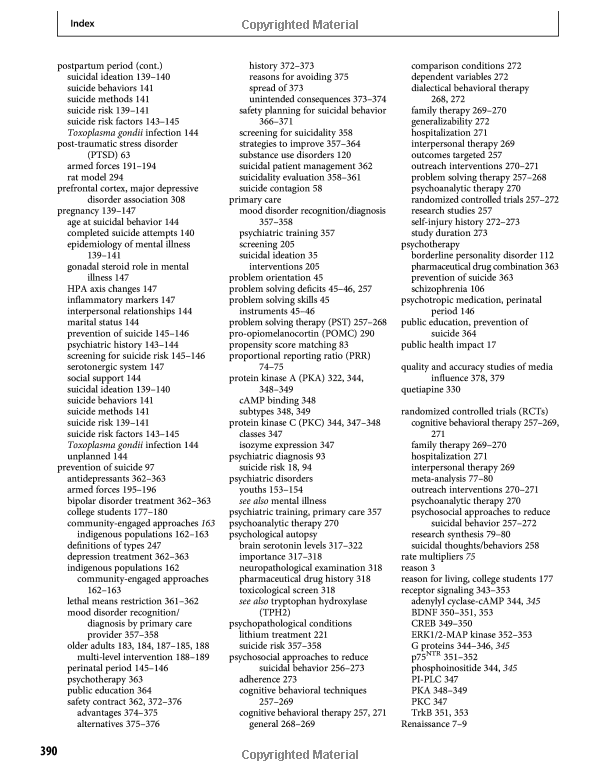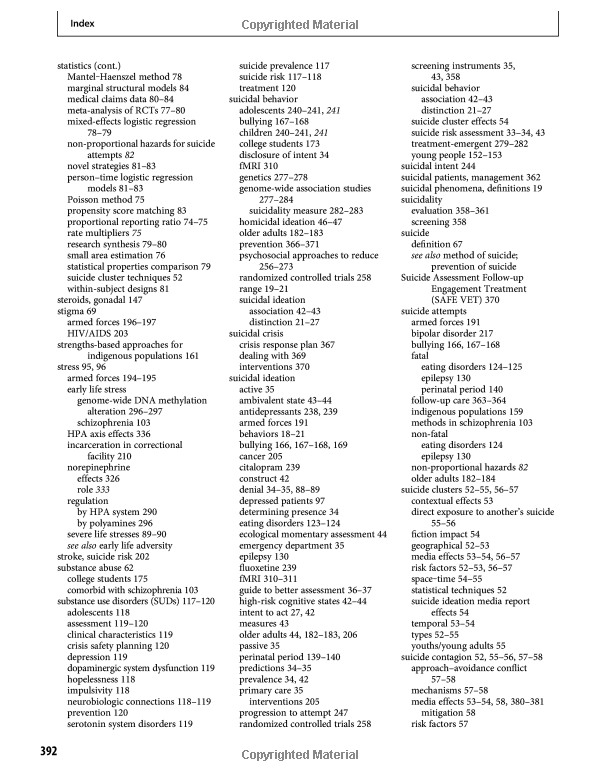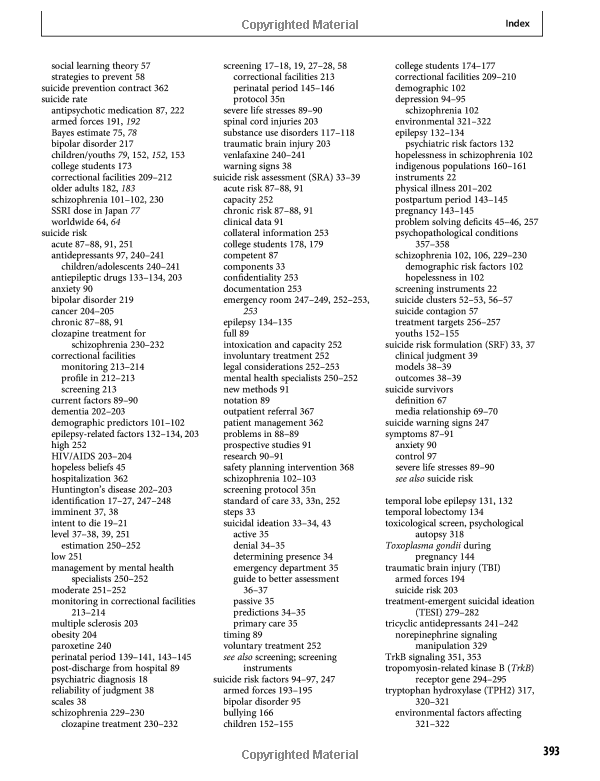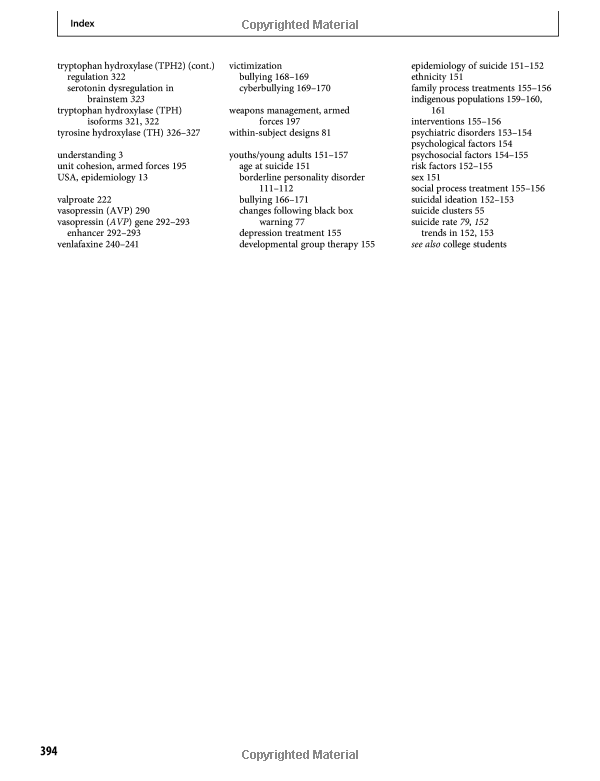图书简介
Leading researchers summarize research on understanding, treating and preventing suicide and provide practical information for educating practising clinicians, health care workers and researchers and a pathway for undergraduate and graduate students interested in solutions to suicide. It will also appeal to the University community and lay public nationally and internationally.
Introduction: looking to the future – how can research prevent suicide? Stephen H. Koslow, Pedro Ruiz and Charles B. Nemeroff; Part I. Understanding Suicide: 1. Brief history of suicide in Western cultures Leonardo Tondo; 2. Global epidemiology of suicide Pedro Ruiz; 3. Identification and screening of suicide risk Kelly Posner, Kseniya Yershova, Leora Amira, Jacqueline Buchanan and Adam Lesser; 4. Rethinking suicide risk assessment and risk formulation Alan L. Berman and Morton M. Silverman; 5. High risk cognitive states Gregory K. Brown and Kelly Green; 6. Suicide clusters and suicide contagion Alison M. Lake and Madelyn S. Gould; 7. Ethnicity: how much of our understanding of suicide is applicable across ethnic cultures? Donna Holland Barnes, William B. Lawson and Kelsey Bell; 8. Suicide-related bereavement and grief M. Katherine Shear and Sidney Zisook; 9. Statistics Robert D. Gibbons; Part II. Suicidal Comorbidities: 10. Current and chronic signs and symptoms Jan Fawcett; 11. Anxiety, depression and suicide: epidemiology, pathophysiology and prevention Giampaolo Perna and Alan F. Schatzberg; 12. Suicide in schizophrenia Philip D. Harvey and Stacey Espaillat; 13. Personality disorders and suicide Katharine J. Nelson, Michael J. Miller, Alexandra Zagoloff, Melinda K. Westlund and S. Charles Schulz; 14. Suicide and substance use disorders Timothy W. Lineberry and Kathleen T. Brady; 15. Eating disorders and suicide April Smith, Tracy Witte and Scott Crow; 16. Suicidality and epilepsy: a complex relationship Andres M. Kanner; Part III. Special Populations: 17. Suicidal ideation and behavior during pregnancy and the postpartum period Jessica Coker and Zachary N. Stowe; 18. Childhood and adolescence Tina R. Goldstein, Jeffrey A. Bridge and David A. Brent; 19. Indigenous/native populations Deborah Goebert; 20. Bullying and suicidality in youth Anat Brunstein Klomek and Madelyn S. Gould; 21. College students Amanda L. McMillan and Steven J. Garlow; 22. Suicide in older adults Yeates Conwell and Kimberly Van Orden; 23. Armed forces James A. Naifeh, Matthew K. Nock and Robert J. Ursano; 24. Medical illness Gary J. Kennedy and Anne Rohs; 25. Suicide in the criminal justice system Steve Leifman and Tim Coffey; Part IV. Treatment: 26. Reduction of suicidal behavior in bipolar disorder patients during long-term treatment with lithium Leonardo Tondo and Ross J. Baldessarini; 27. Clozapine David Ayer and Herbert Y. Meltzer; 28. Antidepressants Molly Ryan and Charles B. Nemeroff; 29. Suicide and emergency room treatment Collin Davidson, Jennifer H. Olson-Madden, Marian E. Betz and Michael H. Allen; 30. Psychosocial approaches to reduce suicidal behavior Anne C. Ward, Catherine R. Glenn, Matthew K. Nock and Michael W. Otto; Part V. Research: Mediators and Moderators: 31. Genome-wide association studies of suicidal behaviors Marcus Sokolowski, Jerzy Wasserman and Danuta Wasserman; 32. Epigenetics Benoit Labonté and Gustavo Turecki; 33. The use of neuroimaging to investigate the pathophysiology of suicide Christopher R. Bailey, Allison M. Greene and Alexander Neumeister; 34. Brain serotonin in suicides with psychological autopsy Victoria Arango and Helene Bach; 35. The noradrenergic system in depression and suicide Michelle J. Chandley and Gregory A. Ordway; 36. Brain CRF and the HPA axis in suicide Ghanshyam N. Pandey; 37. Receptor signaling in suicide Yogesh Dwivedi; Part VI. Suicide Prevention: 38. Strategies to improve suicide prevention Sarah A. Struthers and Robert M. A. Hirschfeld; 39. Safety planning to prevent suicidal behavior Barbara Stanley, Emily A. Biggs and Gregory K. Brown; 40. Contracting for safety Michael Craig Miller; 41. Suicide and the media Jane Pirkis and R. Warwick Blood; Index.
Trade Policy 买家须知
- 关于产品:
- ● 正版保障:本网站隶属于中国国际图书贸易集团公司,确保所有图书都是100%正版。
- ● 环保纸张:进口图书大多使用的都是环保轻型张,颜色偏黄,重量比较轻。
- ● 毛边版:即书翻页的地方,故意做成了参差不齐的样子,一般为精装版,更具收藏价值。
关于退换货:- 由于预订产品的特殊性,采购订单正式发订后,买方不得无故取消全部或部分产品的订购。
- 由于进口图书的特殊性,发生以下情况的,请直接拒收货物,由快递返回:
- ● 外包装破损/发错货/少发货/图书外观破损/图书配件不全(例如:光盘等)
并请在工作日通过电话400-008-1110联系我们。
- 签收后,如发生以下情况,请在签收后的5个工作日内联系客服办理退换货:
- ● 缺页/错页/错印/脱线
关于发货时间:- 一般情况下:
- ●【现货】 下单后48小时内由北京(库房)发出快递。
- ●【预订】【预售】下单后国外发货,到货时间预计5-8周左右,店铺默认中通快递,如需顺丰快递邮费到付。
- ● 需要开具发票的客户,发货时间可能在上述基础上再延后1-2个工作日(紧急发票需求,请联系010-68433105/3213);
- ● 如遇其他特殊原因,对发货时间有影响的,我们会第一时间在网站公告,敬请留意。
关于到货时间:- 由于进口图书入境入库后,都是委托第三方快递发货,所以我们只能保证在规定时间内发出,但无法为您保证确切的到货时间。
- ● 主要城市一般2-4天
- ● 偏远地区一般4-7天
关于接听咨询电话的时间:- 010-68433105/3213正常接听咨询电话的时间为:周一至周五上午8:30~下午5:00,周六、日及法定节假日休息,将无法接听来电,敬请谅解。
- 其它时间您也可以通过邮件联系我们:customer@readgo.cn,工作日会优先处理。
关于快递:- ● 已付款订单:主要由中通、宅急送负责派送,订单进度查询请拨打010-68433105/3213。
本书暂无推荐
本书暂无推荐
